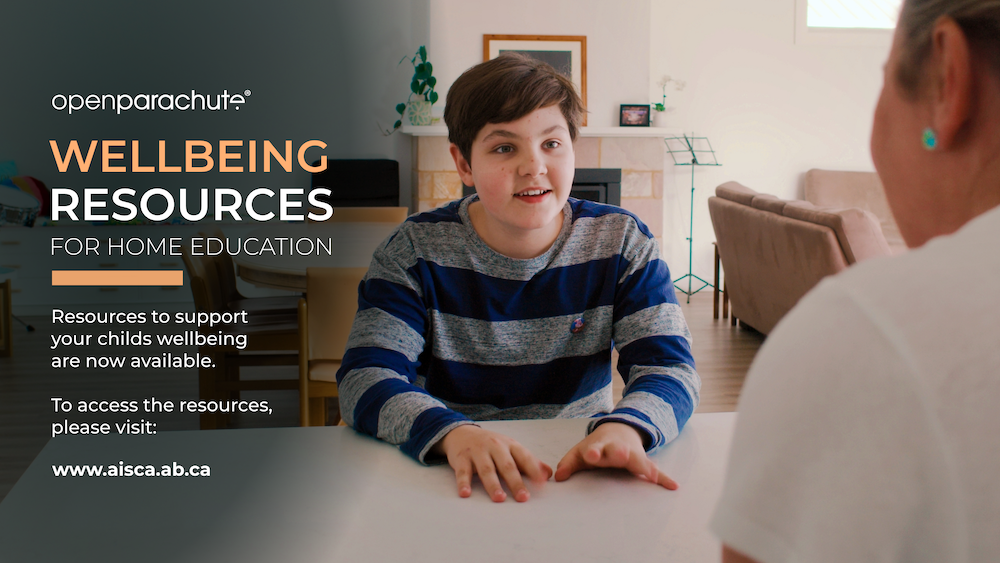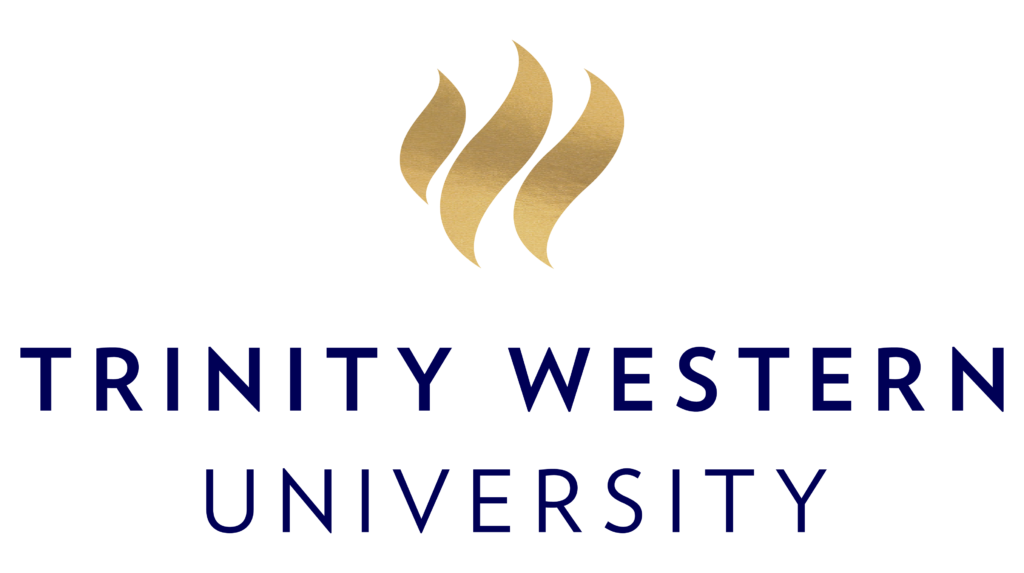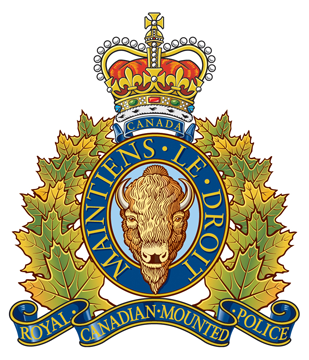Pages
Conference Details Join The Wait List Presentations Exhibitors Resources Schedule
 Dr. Brian Ray is a leading international expert in research on homeschooling and president of the National Home Education Research Institute (NHERI). He has published numerous articles and books, is regularly interviewed by major media, serves as an expert witness in court cases, and testifies to legislatures regarding education. Dr. Ray is a former university professor and public and private school classroom teacher. He holds a Ph.D. (science education, Oregon State University), a M.S. (zoology, Ohio University), and a B.S. (biology, University of Puget Sound), and is a church leader. Brian and Betsy have been married 46 years, have eight children who were all home educated, run a small farm, and have 21 grandchildren. Dr. Ray really enjoys wandering with Betsy, his wife, and being out in the forests and mountains and on adventures. See research at www.nheri.org.
Dr. Brian Ray is a leading international expert in research on homeschooling and president of the National Home Education Research Institute (NHERI). He has published numerous articles and books, is regularly interviewed by major media, serves as an expert witness in court cases, and testifies to legislatures regarding education. Dr. Ray is a former university professor and public and private school classroom teacher. He holds a Ph.D. (science education, Oregon State University), a M.S. (zoology, Ohio University), and a B.S. (biology, University of Puget Sound), and is a church leader. Brian and Betsy have been married 46 years, have eight children who were all home educated, run a small farm, and have 21 grandchildren. Dr. Ray really enjoys wandering with Betsy, his wife, and being out in the forests and mountains and on adventures. See research at www.nheri.org.
Talk Descriptions
Let’s Flip the Question: Why Would You Ever Stop Homeschooling, Not Why Would You Homeschool?
Friday evening, April 4, 2025
Dr. Ray takes you straight to philosophy, but you won’t groan over it. Asking the right questions about what is real, how we come to know truth, and what is of value regarding education soon leads you to the right place as an adult or for your children. Dr. Ray will mix history, philosophy, your possibly self-unrecognized biases, research facts, and pragmatic applications about education and each child’s, family’s, and society’s future to challenge you and encourage you, whether young or old, new to homeschooling or a veteran.
Know Yourself and Know That Homeschooling Works: Charting a Course Part 1
Dr. Ray will build your confidence about your future by first building your certainty about parent-directed home-based education, as opposed to institutionalized schooling. He will give you some educational history and then pack your head full of research facts and statistics on the learner outcomes of homeschooling. The goal is for the information to go beyond your head to touch your heart, give you conviction about the future, and point you in a positive direction. There will be plenty of time for discussion and Q and A.
There is No One Best System But There Is Your Future: Charting a Course Part 2
Dr. Ray has many formal education degrees but he knows that those are not necessary for the pinnacle of the good life. What pressures are on you as teenagers for your future? What are Dad and Mom saying? Your friends? Your culture? Dr. Ray will help you step back, assess some options and realize that the sky and wide-ranging field are the limit. One of the beauties of home education is diversity, options, alternatives, efficiency, relaxation, and being out of the norm. Why go to college, why not? How is debt good, or bad? How might you capitalize on the advantages of home education? Dr. Ray has some ideas for you based on 40 years of doing research, raising 8 children, and meeting homeschoolers all over the world. Bring your head, your heart, a notepad, your parents, and some laughter. There will be plenty of time for discussion and Q and A.
Panel/Round-Table Discussion with Dr. Ray
Conference Details Join The Wait List Presentations Exhibitors Resources Schedule
This schedule subject to change.
Click the timestamps for longer descriptions!
Friday
1:00 Registration
1:30 Welcome and Announcements, First session begins - Socratic Discussion event, High School Goal Planning session, or Courses Charted: Parent Panel with WISDOM Facilitators.
3:30 Coffee & Muffins Conversation
4:00 Depart for supper (on your own)
7:00 Doors open/Registration (coffee, tea, water, juice)
7:30 Evening Sessions
- Adults | Dr Brian Ray on Let’s Flip the Question: Why Would You Ever Stop Homeschooling, Not Why Would You Homeschool?
- Youth | Mr. Nicholas Pierlot on Navigating Your Temperament
9:30 Closing
Saturday
8:00-9:00 Check in for pre-registered and new registrations
8:30 Coffee, tea and icebreakers
9:00 Door Prize
9:05 Welcome and Announcements
9:15 Know Yourself and Know That Homeschooling Works: Charting a Course Part 1 - Dr Brian Ray
10:25 HSLDA ONE Minute Careers and Colleges Guide for Homeschoolers
10:30 Needs Break
10:40 Post-Secondary & Employment Opportunities - ONE Minute “How can homeschoolers enter your institution?”
11:25 Charting Your Course
11:40 Lunch
Noon Exhibit Hall opens
1:55 Door Prize
2:00 There is No One Best System But There Is Your Future: Charting a Course Part 2 - Dr Brian Ray
3:00 Coffee Break
3:15 Panel/Round-Table Discussion with Home Schooled Grads, Parents, Experts & Dr. Ray
4:15 Chart Your Course
4:30 Closing remarks
Friday
1:00 Check in (for pre registered and new registrations) at Spruce Grove Alliance Church.
1:30 Welcome and Announcements, First session begins - Socratic Discussion event or High School Goal Planning session
The Socratic Discussion event is an opportunity to spend time thinking about and discussing meaningful ideas with other conference participants. Participants will read a short story of enjoyable fiction and enter into a purposeful conversation to gain a deeper understanding of its content, guided by one of WISDOM's Socratic Dialogue Online Program tutors or WISDOM staff. The WISDOM Socratic Dialogue Online Program has offered courses in the classical tradition to home educated students for over 20 years. Covering a subject span of excellent literature, history, philosophy, theology, politics, logic, language, and writing, the Online Program aims to introduce and immerse students in the ideas of the great thinkers of the Western tradition and to help them understand these ideas as aimed at knowing the True, the Good, and the Beautiful. The short reading will be sent to participants ahead of time.
Ready to turn your dreams into reality? The High School Goal Planning workshop will help you do just that! Setting goals is like giving your future a map or GPS—without them, you’re just cruising without a direction! But when you embrace a growth mindset, you start seeing every challenge as a chance to grow. Failing? It’s not a setback, it’s part of the journey to success! And here’s the secret: a vision board is like your personal roadmap to the future you want. It keeps you on track, motivated, and ready for whatever’s next. Whether you're aiming for a better grade, mastering a new skill, or totally leveling up in life, your goals, mindset, and vision board are the tools that’ll help you crush it. Let’s make your dreams happen together—join the Mediated Learning High School Goal Planning workshop and start mapping out your future today!
Our plenary Courses Charted session on Friday afternoon is a Parent Panel with WISDOM Facilitators who have graduated their children through high school at home. Facilitators will share their unique experiences of homeschooling and the journeys their children have taken through high school and beyond. This session will include time for Q&A.
The Socratic Discussion event, High School Goal Setting workshop, and Courses Charted: Parent Panel with WISDOM Facilitators are great opportunities for the High School Conference attendees to meet each other, for students to connect and enjoy discussion and activities in person, and for those who are new to the idea of socratic discussion, Mediated Learning, and homeschooling through high school to get a taste of what the experience can offer. Please choose which session you will attend when you register for this event. Parents and students alike are welcome to participate. Capacity is limited for our Friday sessions—first registered, first admitted.
2:30 Break (coffee/muffins)
3:30 Coffee & Muffins Conversation. Enjoy a hot beverage and muffins while visiting with conference attendees.
4:00 Depart for supper (on your own)
7:00 Doors open for evening session by High School & Beyond Conference keynote speaker, Dr. Brian Ray. Registration available for those who were unable to attend the earlier session. Enjoy a beverage (coffee, tea, water, juice) before the session starts.
7:00 Doors open for evening session by High School & Beyond Conference keynote speaker, Dr. Brian Ray and youth session by presenter Mr. Nicholas Pierlot. Registration available for those who were unable to attend the earlier session. Enjoy a beverage (coffee, tea, water, juice) before the session starts.
7:30 Evening Sessions
9:30 Closing
Saturday
8:00-9:00 Check in for pre-registered and new registrations
8:30 Coffee, tea and icebreakers.
9:00 Door Prize. You need to be in your seat to win!
9:05 Welcome and Announcements
9:15 Know Yourself and Know That Homeschooling Works: Charting a Course Part 1 - Dr Brian Ray
Dr. Ray will build your confidence about your future by first building your certainty about parent-directed home-based education, as opposed to institutionalized schooling. He will give you some educational history and then pack your head full of research facts and statistics on the learner outcomes of homeschooling. The goal is for the information to go beyond your head to touch your heart, give you conviction about the future, and point you in a positive direction. There will be plenty of time for discussion and Q and A.
10:30 Needs Break
10:40 Post-Secondary & Employment Opportunities - ONE Minute “How can homeschoolers enter your institution?”
Colleges, universities, and employment opportunities will have just one minute to give you their elevator pitch! This exciting session keeps representatives on their toes as they deliver only the most important information on the stage. After lunch, you have the opportunity to talk to them at their booths for more information.
Guided reflection time on charting your course through high school and beyond.
11:40 Lunch
Visit each booth and collect information on post secondary options, career opportunities, and more. Talk to high school subject specialists, WISDOM facilitators, the Mediated Learning and Socratic Dialogue Online Program teams, and get inspired for the journey through high school and beyond!
1:55 Door Prize
2:00 There is No One Best System But There Is Your Future: Charting a Course Part 2 - Dr Brian Ray
Dr. Ray has many formal education degrees but he knows that those are not necessary for the pinnacle of the good life. What pressures are on you as teenagers for your future? What are Dad and Mom saying? Your friends? Your culture? Dr. Ray will help you step back, assess some options and realize that the sky and wide-ranging field are the limit. One of the beauties of home education is diversity, options, alternatives, efficiency, relaxation, and being out of the norm. Why go to college, why not? How is debt good, or bad? How might you capitalize on the advantages of home education? Dr. Ray has some ideas for you based on 40 years of doing research, raising 8 children, and meeting homeschoolers all over the world. Bring your head, your heart, a notepad, your parents, and some laughter. There will be plenty of time for discussion and Q and A.
3:00 Coffee Break
3:15 Panel/Round-Table Discussion with Home Schooled Grads, Parents, Experts & Dr. Ray
Applying what you’ve learned from the conference to your journey through high school and beyond.
4:30 Closing remarks
Mental health resources are now available to home schoolers! Open Parachute was initially developed for use in schools, but they partnered with AISCA and home schooling stakeholders (including WISDOM) to create a format that puts parents totally in the driver's seat for their children. You create an account and choose which modules to have your child work through.
Click here to read what home schooling parents have to say about Open Parachute.
Watch the introductory video below, then select 'registration for home education families' and follow the prompts.
Registration for Home Education Families
For a longer introduction, check out this 30 minute information session from AISCA:
Registration for Home Education Families
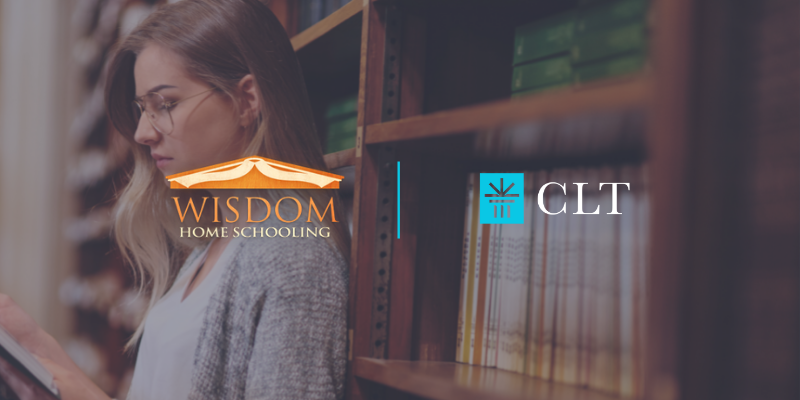
Effective entrance exams and assessments designed specifically with home education in mind.
The Classic Learning Test (CLT) is a post-secondary entrance exam, created as an alternative to the SAT and recognized at many post-secondary institutions across the United States, and a growing number in Canada.
In addition to the college entrance exam, the folks at CLT have created the CLT3-8 assessments for grades 3 through 8 and the CLT10, a college preparatory exam for grades 9 and 10. These tests focus on numeracy and literacy, and can be a useful evaluation tool, and one that can be conveniently accessed from home.
WISDOM only charges a processing fee of $10 for each CLT exam a WISDOM student takes.

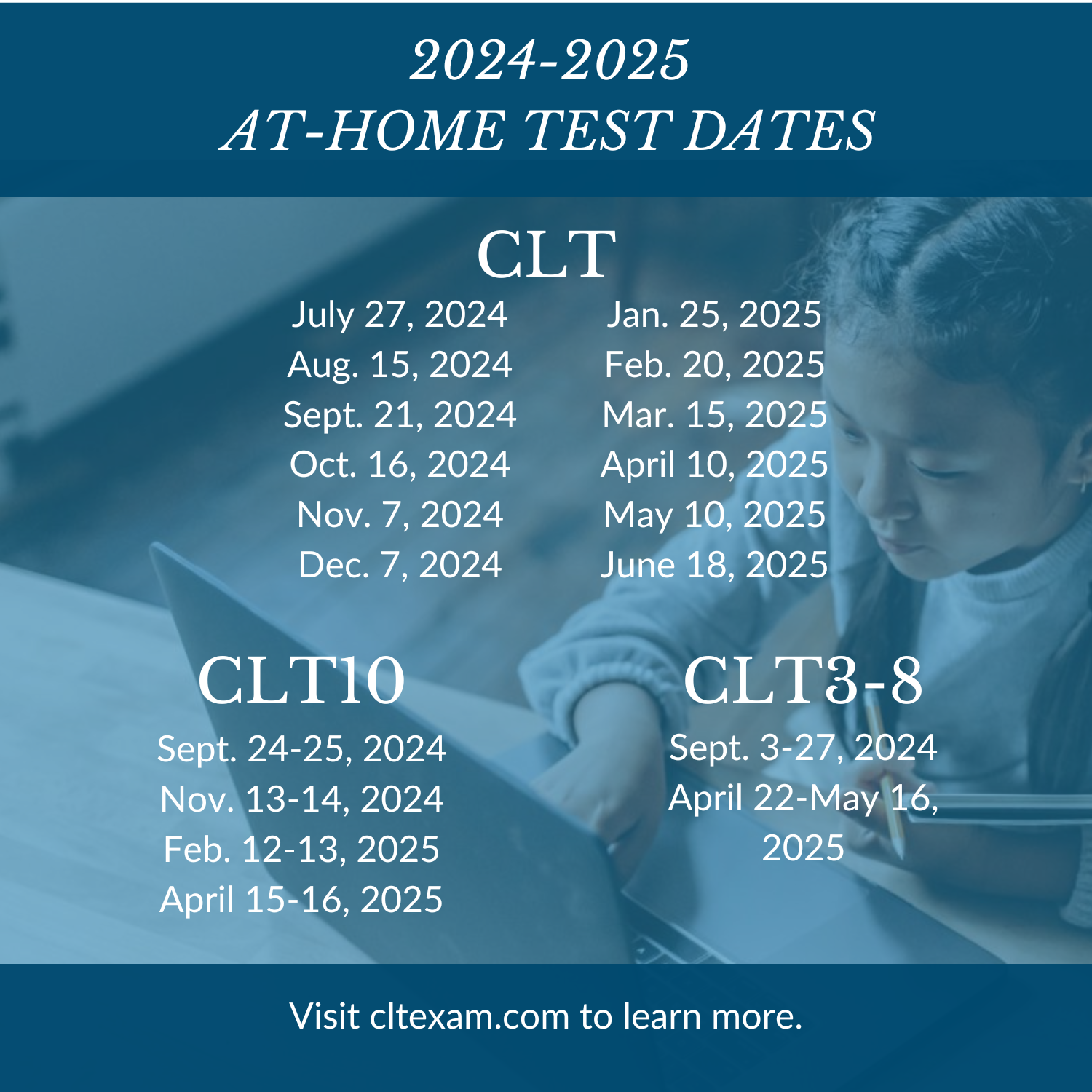
Better tests, better students
The CLT exams are user-friendly and provide a rigorous measure of academic formation, accomplishment, and potential. CLT provides a new standard that puts students in front of the thinkers and questions that have most meaningfully shaped culture.
- Take the test from the comfort and safety of your home
- Provides parents with a worthwhile teaching resource
- Assesses both aptitude and achievement
- Delivers more rigorous content than other standardized tests
- Utilizes meaningful and timeless primary sources
- Promotes critical thinking and higher-level analysis
- Exams take approximately 2 hours to complete
- Exams assess English, mathematical, and critical reasoning skills
- Millions in scholarship dollars available with CLT partner colleges
Assessments worthy of a student's time and attention
The CLT Suite of Assessments are the only exams that are taken at home, online, and designed with homeschoolers in mind. They are user-friendly and accurate—not only can they be taken online at home and completed in two hours, they also provide a rigorous measure of academic formation, accomplishment, and potential. CLT provides a new standard that puts students in front of the thinkers and questions that have most meaningfully shaped culture. In addition, a student's overall score on the CLT is calculated based on the total number of questions answered correctly. No points are deducted for incorrect answers.
Accepted at 250+ partner colleges
CLT is partnered with over 250 colleges and universities, including Trinity Western University, Redeemer University College, Our Lady Seat of Wisdom College, Catholic Pacific College, Wyoming Catholic College, Thomas Aquinas College, and many more. Plus, with CLT's unlimited free score sharing, students can share their score with any college and university in the world.
CLT & CLT10 Practice Tests
CLT offers free practice tests that can help students better prepare to take the real CLT exam. The benefits of practice tests include:
- Online Tests – Take the practice test using the same experience and content structure used for the CLT and CLT10.
- Immediate Results – View your practice test score as well as the results for each question.
- Answer Explanations – Review the explanation for each practice question to improve your performance.
CLT FAQs
Why Another Exam?
Classic Learning Test was formed in 2015 when their founder, Jeremy Tate, began to question why students needed to spend so much time preparing for a college entrance exam (SAT/ACT) that did not reflect the deep, holistic education they were receiving in homeschool or private schools.
SAT and ACT are both aligned with Common Core and reflect a public school education. The passages used on the exams are from sources primarily written within the last 10 years, removing any vestiges of the Christian intellectual tradition. They do not allow students who have read widely and pursued truth and reason to showcase their real strengths. CLT was birthed out of a desire to provide a test aligned to an education that emphasizes the connection between knowledge and virtue and can highlight the strengths of these students.
What started as a college entrance exam has grown into a suite of assessments for 3rd - 12th graders. The CLT suite of assessments assesses foundational educational concepts in language arts and mathematics with an emphasis on critical thinking and logic throughout the exams. The exams feature Great Books content that is primarily drawn from CLT’s Author Bank.
All CLT assessments can be taken online at home. The CLT3-8 (3rd-8th grade) and the CLT10 (9th-10th grade) are proctored by parents. The CLT (college entrance exam) is remotely proctored to uphold the standards required by college partners. Each exam takes approximately 2 hours.
Why should my family use CLT?
The CLT suite of assessments provides Student Analytics on each exam that can help families strengthen the quality of their education. It’s not about simply improving on a test. The goal is to maximize your student’s education.
Additionally, the CLT suite of assessments provides students with experience taking standardized exams in a familiar environment. The content of the exams is well aligned with your style of education; therefore, the time spent testing is meaningful due to the Great Books content and challenging mathematical reasoning questions. Plus, the feedback provided is well-aligned to the education you are providing your students.
How does CLT offer greater flexibility with testing?
- CLT3-8 are offered during a four-week testing window twice a year, once in the fall and once in the spring.
- The CLT10 is offered four times each year.
- The CLT is offered twelve times per year.
- Students test at their preferred time of day (not all students perform best early in the morning!) Score shares (CLT10 and CLT) are free and unlimited, and students do not opt into sharing scores until they view them. All CLT’s are taken at home. CLT3-8 and CLT10 are parent proctored tests, while CLT is remotely proctored. Please click here for remote proctoring information and preparation guides
When should students test with CLT?
CLT currently has exams for 3rd-12th grade students. Most families test once in the fall to set a baseline for the year and again in the spring to get end-of-year results to assess what their student has accomplished over the year.
Should students prep for the CLT?
An education that emphasizes reading, discussion, mathematics, and critical thinking is the best preparation for the CLT. The CLT is designed to reflect a robust education; however, most homeschooled students are not accustomed to multiple choice or timed tests. Students may feel more confident if they have some experience prior to taking an official exam. For this reason, CLT provides free online practice exams with full answer explanations for CLT10 and CLT on the student dashboard. A CLT Student Guide is available for purchase for those seeking additional practice.
For the CLT3-8 exams (3rd-8th grade), preparation is not recommended as these exams are intended to be a benchmark that provides feedback to parents about their students’ strengths and areas for improvement. Families are welcome to explore the functionality of the exam by viewing the demo CLT3 exam on this page, though students should understand that the content varies in difficulty according to grade level.
Is the CLT accepted by all colleges?
Though the CLT is not accepted by all colleges, over two hundred colleges partner with CLT, accepting the exam as a complete replacement of the ACT or SAT. Additionally, with many colleges going test-optional, even colleges who do not partner with CLT will accept CLT scores.
Sharing your scores is a great way to strengthen your application even if they are not required. CLT Partner Colleges tend to be private, liberal arts, or faith-based colleges which share their mission to reconnect knowledge and virtue in the classroom.
Can I earn scholarships with CLT?
Many colleges offer scholarships tied to CLT scores. You may view a list of scholarship opportunities with CLT Partner Colleges by clicking here.
Should I take the CLT if I have already taken/plan to take the ACT/SAT?
If you are planning to attend a CLT Partner College, sending CLT scores to those colleges demonstrates that you are a student who is well-prepared for their academics. CLT Partner Colleges have noted that CLT students do very well in their classes, so these colleges often respond with excited interest and generous scholarships to CLT scores. Additionally, many homeschooled students find they perform better on the CLT than the ACT/SAT. Even if you are not planning to attend a CLT Partner College, the Student Analytics that accompany each test give invaluable insight into your education, highlighting your strengths and areas for improvement.
What if the college I want to attend does not accept the CLT?
CLT is diligently working to earn greater acceptance, particularly with colleges that value a liberal arts education. They add new colleges to our partner list routinely, but the most effective way of adding new partners is for colleges to hear from students they want to use their CLT scores.
If you're interested in applying to a college that isn't currently a CLT Partner, don't be discouraged. Call the college or university of interest and ask to speak with an admissions representative. Explain what CLT is, why you want to use CLT in the admissions process, and why they should consider your scores. You can share that the CLT best reflects your education and demonstrates your academic excellence. This is a great way to connect with a college and to help CLT gain wider recognition. There have been many cases where these kinds of conversations have led to a new CLT college partnership.
Are there testing accommodations available for CLT?
Yes, Students with documented learning disabilities may apply for testing accommodations. Testing accommodations are adaptations to an exam that can help ensure that the test measures what it is designed to measure, rather than the negative effects of a person’s disability. The purpose of testing accommodations is to provide candidates with full access to the test – not to guarantee improved performance, a passing score, test completion, or any other specific outcome.
Please click here for more information and applications for testing accommodations.
Conference Details Join The Wait List Presentations Exhibitors Resources Schedule
Exhibitors, register here!
Jump to: Post-Secondary Employment Opportunities Life Skills & Career Inspiration And More
Post-Secondary
Employment Opportunities
Life Skills & Career Inspiration
Carpentry Instructor
Engineer
Financial Professional
Heavy Duty & Automotive Technician
How to Write a Resume & Prepare for an Interview
Lawyer
Physician
Plumber/Gasfitter
Registered Nurse
And More

Welcome to the WISDOM Alumni Association!
Home educated students have been graduating from the WISDOM community since 1995, and it's time to start to get all of us together.
Request to join our mailing list for upcoming information on the official association, potential volunteer positions, a proposed alumni newsletter, and most excitingly, future alumni events.
Purpose of the WISDOM Alumni Association
- Honour – WISDOM exists because you home schooled
- Share the benefits of home schooling
- attract new home schoolers
- encourage parents in the trenches by seeing the potential for their children
- encourage high school students to stay the course at home
- convince government, industry, media, via examples of life
- Peer support for each other
- reflect on your home schooling journey
- re-acquaint with home schoolers you knew
- share common experiences from your era
- support like-minded people during difficulties

“How do I get into a university or college?” “What do I need to get a job?” “How do I show that I’ve had a good high school education through home schooling?” These are common questions that arise when considering high school at home.
Home educated students can take many paths through high school, with differing types of final credentials. A student might consider one or several of the options presented below.
Always research the sort of credentials you will need in the future, in order to assist in planning out a high school education that will meet your individual needs and goals. Your facilitator and our high school advisor are available to assist you in planning a path forward, and choosing an option that best suits your unique education.
Potential credentials a student might consider include (click on any for more information):
- High School Portfolio
- Parent Verified & School Certified Transcript of High School Marks
- WISDOM Diploma or Certificate of High School Completion
- CLT (Classic Learning Test)
- CAEC (Canadian Adult Education Credential)
- SAT (Scholastic Assessment Test)
- ACT (American College Testing)
- Post-Secondary Entrance Exams (specific to the institution)
- Alberta High School Credits & Transcript
- Alberta High School Diploma
High School Portfolio
Portfolios continue to be a strong credential for home educated students. Having a document that says the student has acquired specific knowledge and skills is good, but a portfolio will show how that student has acquired specific knowledge and skills.
WISDOM strongly recommends that every student develop a high school portfolio. There are benefits to having a portfolio in conjunction with any other credential you pursue.
For more information on creating a portfolio, click here.
Benefits:
- Accepted by some post-secondary institutions with an interview.
- Accepted by many employers
- Offers support to any other credential obtained.
- Specific record of the individual student’s work and skills
Limitations:
- Insufficient evidence for some institutions
- Insufficient for some employers
Parent Verified & School Certified Transcript of High School Marks
A Parent Verified Transcript (or Summary of High School Marks / Home Education Record) is an official document containing a table of subjects with corresponding marks or grades of the student’s high school year, as verified by the parents.
This provides parents and students with a personal record of high school achievement which can be used with various post secondary institutions or businesses that require a transcript of high school marks.
Benefits:
- Indicates completion of High School and readiness to enter the adult world
- Specific record of the individual student’s work on a student transcript
- Accepted by some post-secondary institutions
- Accepted by many employers
Limitations:
- Insufficient evidence for some institutions
- Insufficient for some employers
WISDOM Diploma or Certificate of High School Completion
Each home education student who successfully completes high school at home will have achieved the learning outcomes as determined by the parents and approved by the WISDOM facilitator. This student qualifies to receive a WISDOM diploma or a parent authorized Certificate of High School Completion which is an official recognition of high school completion.
Benefits:
- Indicates completion of High School and readiness to enter the adult world
- Accepted by some post-secondary institutions
- Accepted by many employers
Limitations:
- Insufficient evidence for some institutions
- Insufficient for some employers
CLT (Classic Learning Test)
CLT offers assessment tests that suit traditional home educated students. Featuring passages selected from great works across a variety of disciplines, the CLT suite of assessments provide a highly accurate and rigorous measure of reasoning, aptitude, and academic formation for students from diverse educational backgrounds. The exams are taken online in two to three hours.
The CLT provides colleges and secondary schools with detailed information about student learning trends to facilitate decisions about admissions, curricula, and instruction. The CLT3-CLT10 may be used in grades 3-10 to measure student progress, and the CLT in grades 11-12 as a college entrance exam. A number of post-secondary institutions offer scholarships to students who use the CLT. WISDOM students receive a special discount on CLT test fees.
Click here to view test dates and register for CLT tests
Benefits:
- Access to many colleges and universities
- Potential consideration for specific scholarships
- Provides comprehensive student assessment
- Tests are designed with homeschoolers in mind
- Tests are taken at home at a time chosen by family
- Tests are discounted for WISDOM students
Limitations:
- May not allow direct access to the program you have selected; additional research is required
CAEC (Canadian Adult Education Credential
The Canadian Adult Education Credential (or CAEC) is a high school equivalency diploma in Canada for those who do not have a high school diploma and are seeking access to employment prospects, education pathways such as trades programs, and training opportunities. Students should confirm directly with prospective employers, post-secondary institutions and others that the CAEC meets their job or admission requirements. CAEC tests can be taken over an extended period of time, and results never expire. Each test generally costs 75$ for a total of $375 for all 5 tests.
In order to determine basic high school equivalency, the CAEC battery of 5 tests includes:
- Reading
- Writing
- Science
- Social Studies
- Mathematics (Part I and Part II)
Registration
To write a CAEC test, you will need to create a profile within the CAEC digital platform.
On this platform, you can schedule a test at a testing centre of your choice and pay fees.Testing centres can provide more information about registration deadlines, fees and test dates.
Please use the links below to access more information on writing centres, general information, practice tests, study materials, and test previews.
CAEC Digital Platform Alberta Testing Centres
Eligibility:
To receive a High School Equivalency Diploma by writing CAEC tests, a person must meet the following eligibility requirements:
- Be 18 years of age or older.*
- Have been out of school for at least 10 consecutive months.*
- Have an Alberta Student Number.
- Must provide two forms of valid identification (ID) at the time of testing.
- Pass all five tests in the CAEC test battery, with a minimum passing score of 55% or higher for each of the tests.
*Pre-Adult CAEC Registration
The CAEC is meant for mature students and adults, however, a 17 year old student still in school can take the CAEC prior to graduation, providing that they have less than 80 credits awarded for high school courses. To take the test at 17, please reach out to WISDOM for guidance.
Benefits:
- Access to trade schools and college programs
- You may achieve the diploma while using supplemented home education curriculum
Limitations:
- May not allow direct access to University
- Time spent fulfilling requirements & writing provincial exams
SAT (Scholastic Assessment Test)
The purpose of the SAT is to measure a high school student's readiness for college, and to provide colleges with one common data point that can be used to compare all applicants. Used primarily for American colleges and universities, it is also accepted at most Canadian institutions.
Benefits:
- Access to many colleges and universities
- Potential consideration for specific scholarships
- Free digital SAT prep resources available through Khan Academy
Limitations:
- SAT tests offered in limited locations (Click here for more info)
- May not allow direct access to the program you have selected; additional research is required
ACT (American College Testing)
The ACT is the leading U.S. university admissions test, measuring what students learn in high school to determine academic readiness for university. It may be used for access to American programs, as well as over 200 additional institutions worldwide.
Benefits:
- Access to many colleges and universities
- Potential consideration for specific scholarships
Limitations:
- May not allow direct access to the program you have selected; additional research is required
Post-Secondary Entrance Exams
Many programs and post-secondary institutions have their own entrance exams for student admission. This can be a good option for home educated students who have followed a unique education suited to their needs, but do not have specific provincial course credits for admission requirements. Speak with an admissions coordinator of the institution of your choice to see if this is an option.
Benefits:
- Access to many colleges and universities
- Allows access to some institutions while having followed a unique home education program
Limitations:
- Entrance exams are specific to the institution they are taken in. These generally will not grant access to other institutions.
- May not allow direct access to the program you have selected; additional research is required.
- Not every institution has entrance exams; additional research is required.
Alberta High School Credits & Transcript
Alberta transcripts are used to enter post-secondary programs that require select
course marks. To gain Alberta high school credits in home education, students will need to participate in course challenges and/or gain waived prerequisite credits.
- Meet course requirements using your own home school program or Alberta Education materials.
- Work with the Subject Specialist or your Facilitator to achieve the requirements of the course. Evaluation is completed using portfolio, oral evaluation or a final exam to arrive at the school-based mark for each course being challenged.
- WISDOM registers the school-based mark and credits with AB Education.
- Student writes the Alberta Diploma exam, worth 30% of the final mark.
- The combined final mark and credits appear on the student’s AB Education transcript.
Alternative Option: Student can take up to 10 credits per year through a distance education provider rather than have the parent deliver the course. Click here for more information.
Benefits:
- Accepted by all universities and many colleges
- Use your own teaching methods and resources
- Receive Alberta credit for skills and knowledge
Limitations:
- Some trade or technical schools require an AB Diploma (ironically requiring less rigour but more detail)
- Home school resources often need to be supplemented
- Demonstrating achievement for AB Ed outcomes may leave less time for the student's other passions
Alberta High School Diploma
Students in home education have the option of obtaining the Alberta High School Diploma by achieving certain Alberta High School Credits. For this option, students will need to speak with their facilitator as early as possible and plan a course load so as to complete the following, with a minimum of 100 credits:
- English 30-1 or 30-2 (or Français 30-1 or 30-2)
- Social Studies 30-1 or 30-2
- Mathematics 20-1, 20-2, or 20-3
- Science 20 or 24, or Biology 20 or Chemistry 20 or Physics 20
- Physical Education 10 (at least 3 credits)
- Career and Life Management (at least 3 credits)
- 10 credits from CTS courses or Fine Arts, or second languages, or Phys Ed 20 or 30, or the Registered Apprenticeship Program (RAP currently not available to home educated students)
- Knowledge and Employability
- 10 credits in any additional 30-level courses.
- Write AB Diploma exams for a minimum of English 30 and Social Studies 30.
To gain Alberta high school credits in home education, students will need to participate in course challenges and/or gain waived prerequisite credits, and/or take distance education courses through a school. If the student is 19 as of September 1, you may choose the Mature Student option of challenging Diploma exams, worth 100% of the final mark.
Benefits:
- Access to trade schools and college programs
- You may achieve the diploma while using supplemented home education curriculum
- Accepted by many employers
Limitations:
- May not allow direct access to University
- Time spent fulfilling requirements & writing provincial exams

WISDOM students enrolled in a senior high school program may choose to pursue Alberta Education courses for credits and marks in accordance with Section 6 of the Alberta Home Education Regulation. WISDOM respects parents as the primary educators of their children; when credits is the path families choose, WISDOM provides support and guidance to help students be as successful as possible in fulfilling Alberta Education’s requirements. WISDOM students gain credits primarily through a Course Challenge process, but also have the option to gain some credits through non-primary registration for Distance Education courses with another school.
There are pros and cons to pursuing Alberta courses for credits. Although it is not necessary for homeschooled students to follow the Alberta Programs of Study outcomes in order to graduate, WISDOM recognizes that some families choose to do so for reasons specific to their needs and goals.
Information about gaining credits with WISDOM, as well as the course challenge process can be found in the digital High School Credit Handbook below.
Course Challenge at a Glance
Course challenge is the means by which Alberta students who choose to not take school-delivered courses can obtain credits and marks. In brief, home educated students have the option to work through a program of study that matches the outcomes of Alberta courses, and upon formal evaluation of learning, an Alberta certificated teacher may award marks and credits.
- Parent & Student lets WISDOM know what courses the student will challenge and speak to the facilitator.
- Parent & Student develop a course of studies to meet Alberta Programs of Study outcomes for their courses.
- Parent & Student create course portfolios.
- Portfolios are submitted for evaluation (worth 70% in core courses or 100% in non core courses).
- Student takes final exams (worth 30% overall mark in core courses).
- Marks and Credits are awarded by WISDOM
So how do I put these Course Challenges in my EPP?
Links for high school credit support and information
- Time for a Real Education
Important article that provides answers to questions such as:
- “How will my child get into university or college?”
- “How will my child gain the credentials to earn a comfortable salary?”
- “How can I possibly teach high school?”
- Alternative High School Credentials
- WISDOM High School Credit Policy
- Proctoring Information
- Course Challenge Dates and Deadlines
- Alberta Programs of Study
- Alberta Diploma Exam Information
- Alberta Diploma Requirements
- Provincially Authorized Senior High School Courses
- Alberta myPass account setup
- Order a SOLARO account (Required to complete Course Challenge)
Want to speak with an experienced WISDOM staff member?
Christian Bekolay: High School Advisor
Peter Weidman: Credits Advisor
WISDOM High School Subject Specialists
High School Credit Handbook

What is a Portfolio?
A portfolio is a compilation of a student's academic achievements and experience. Portfolios are developed throughout a student’s entire education, but in a particular way during the high school years. For students in high school, WISDOM always recommends to start compiling portfolio material as early as possible. Some parents even like to include grade 9 in their student’s high school portfolios! Planning ahead and being organized will help to keep the portfolio development a smooth process.
High school portfolios often include a wide range of examples of student achievement and experience. These things could include:
- Dated samples of student work
- Records of student experience such as volunteer hours, work experience, or sporting events
- Copies of graded unit tests, assignments, quizzes, and practice exams
- Midterm exams
- Samples of essays and creative writing assignments
- Photos of projects
- Lists of literature studies
- Records of facilitator evaluations or tutor feedback
- And the list goes on...
Check here to see if there are upcoming portfolio workshops online or in person.
The article below provides an in depth explanation of the development, and philosophy of student portfolios.
Preparing A Portfolio – By Joyce Sehn
WHY a portfolio?
Portfolios continue to be a very effective method of communicating who you are, and what you can do. Presenting your portfolio in person, and talking about what it contains, adds reinforcement and credibility. This could greatly aid you in getting a job or a seat in the post-secondary institution of your choice. Your portfolio will distinguish you from the many others represented by a stack of applications. Years ago, if a young boy showed an interest in a particular field, he apprenticed with a master, practised until he had acquired great skill, and then produced his own masterpiece. Thus, the goldsmith’s beautiful piece of jewellery, the sculptor’s statue, and the tailor’s suit demonstrated competence in the chosen field.
Things are not very different in the professional world today. An architect shows a building he has designed, with plans and photos of his work. A furniture designer has photos and scale models of his designs. A violinist will perform, or submit a recording of a performance, and have a list of works studied, and so on. This is still the best way to show what you can do!
In an institutional setting, the focus is on curricula and outcomes, content and knowledge. Economic considerations dictate that simple methods be used for evaluating students, thus we have standardized tests, multiple choice questions, and letter or number grades. This method is useful in assessing how students compare to each other, but studies have shown it is not the best way to encourage or assess learning.
In a home setting, we have the freedom to focus on real learning and thinking skills, to develop a love for learning, and to become life- long learners. We can see firsthand what has been learned and the level of understanding achieved. This can be conveyed to others in a variety of ways, including the use of anecdotal notes, samples of work, and the student’s assessment of his or her own learning. This will show what makes them unique - precisely the purpose of a portfolio!
To develop a strong portfolio, it is helpful to answer the following questions:
1. WHO are you?
- What are your strengths and weaknesses?
- What are your likes and dislikes?
- What are your talents, interests and hobbies?
- What experiences do you have? What have you accomplished?
- What have you studied? What have you read?
- What are your distinguishing personality characteristics?
- Where have you lived? Where have you travelled?
2. WHEN and WHY are you preparing a portfolio?
Are you starting a portfolio for a six year old with the goal of preserving memories via photos and a scrapbook approach, or do you need a portfolio in the near future to present to an admissions officer of a college or university? Obviously, these two differing reasons will produce very different-looking results.
Everyone should start a portfolio as soon as possible! The habit of keeping records, saving samples, and filing things in a presentable manner is invaluable. Not only will you have a record for yourself, which you can enjoy reminiscing over in future years, but you will be ready to produce a portfolio to meet requirements when a need arises. It will evolve over time, changing and improving, depending on the need at the time, and the effort exerted.
Students need to be involved! It will be primarily Mom’s job in the early years, but just as older students must take responsibility for their education, they should take responsibility
for preparing their portfolio. This is important enough that it should be included in their program plan at the high school level. The process of preparing and presenting a portfolio, as far as the developing of skill is concerned, is almost as important as the end product.
3. WHAT should be included?
Once you have answered the above questions, you will be much better prepared to proceed. You must then choose what to include. Because no two individuals are the same, no two portfolios will be the same. The list of possibilities is virtually endless, but below are some ideas, in no particular order, from which you may choose (and add your own ideas):
- cover page with name, and a photo of yourself
- table of contents of your portfolio
- a description of your philosophy of education, your family’s vision/goals
- a list of strengths, weaknesses...all the things listed in “Who are you?” above
- lists of extra-curricular-type activities, community and church involvement
- a transcript of marks (given by parents or based on tests or outside evaluations)
- certificates from on-line courses
- diplomas, completion certificates, music festival awards
- lists of musical pieces studied, performances
- lists of concerts attended, places visited (such as museums, etc.)
- character reference letters, employer reference letters
- character development analysis checklist
- lists of courses studied, descriptions of courses
- educational goals, program plans
- log of readings
- photos, videos and audio tapes of activities, projects and accomplishments
- samples of photography, design, art work
- a resume (you may use the same one you would use to apply for a job)
- writing samples and work sheets, such as math tests
- tables of contents from curricula studied, test results
- lists of courses/workshops taken (swimming, first aid, baby-sitting, safety, computer)
- goals for future education and career plans
4. WHAT does a portfolio look like?
Generally, people use a binder or folder of some sort. If it needs to accommodate bigger things, such as original artwork for example, it could be quite large, but usually 8 1/2 by 11 size pages are sufficient. A three-ring binder simplifies arranging and rearranging pages to meet various needs. Non-glare plastic sleeves enable the insertion of pages without punching holes in original documents. A power point presentation could also be used, but the downside of this is availability of equipment. Decide on a simple method of compiling things. Just putting everything in a box may mean you’ll never get back to it, or that you’ll be overwhelmed with the task of organizing it when you eventually get to it, but it is a start. Slipping things into an album on a regular basis will keep things organized chronologically. Scanning documents, photos and projects is another option. When you need to present your portfolio, you can then choose and use relevant items.
A personal example:
Each of our youngest girls has two portfolios. The first is a photo-album type, which covers the early years of their home education. Pictures and certificates are quite prominent. Its main components include:
- photos of activities
- samples of penmanship
- art work (or photos of art work)
- reading lists
- lists of what was studied during this time (arranged by subject)
The second portfolio is a more serious-looking one, which covers the high school years. It includes:
- a description of a classical education and our philosophy of education
- lists of what was studied arranged by subject, including names of books and texts used
- samples of writing
- a list of books read
- descriptions of online courses and completion certificates
- a parent-generated transcript
- a WISDOM certificate recognizing High School Completion (which states that the student has completed the objectives set by the parents)
Much of the process of preparing these portfolios was enjoyable, but there were struggles, too. Deciding what to include, what format to use, and the order in which to present things, was not easy. But, the effort was well worth it! We have a great record of those precious years, and both girls gained admission to a university/college without any Alberta courses or credits, simply by presenting their portfolios.
Each home education student who successfully completes high school at home will have achieved the Alberta Home Education Regulation’s Schedule of Learning Outcomes at a high school level. This student is then qualified to receive a WISDOM Diploma or a WISDOM Certificate of High School Completion.
The completion of high school can include a variety of elements such as:
- A well-rounded education, tailored to the individual student, assisting them in finding and preparing for their calling and vocation(s)
- A classical approach
- Faith and character formation
- Mentorship and entrepreneurship
Benefits of a WISDOM Diploma or Certificate of High School Completion:
- Indicates completion of High School and readiness to enter the adult world
- Is an official document containing the WISDOM seal
- Accepted by some post-secondary institutions
- Accepted by many employers
Limitations:
- Insufficient evidence for some institutions
- Insufficient for some employers
Achieving the WISDOM Diploma
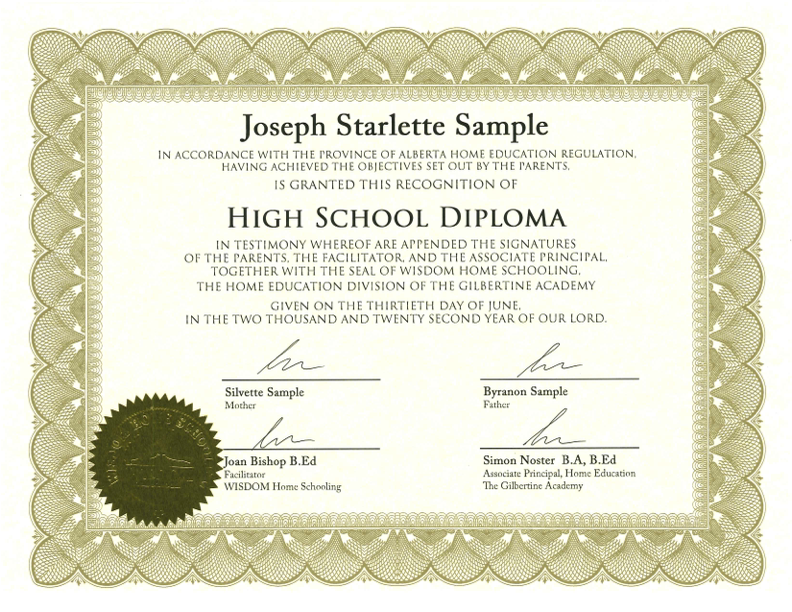 The WISDOM Diploma is an official document, verified by the facilitator and the associate principal of home education, complete with the WISDOM seal.
The WISDOM Diploma is an official document, verified by the facilitator and the associate principal of home education, complete with the WISDOM seal.
Please download the request form below. This form is to be completed by the student along with the parent(s). It is recommended to complete this form throughout the final year of high school rather than doing it all at once. Knowing the expectations of high school achievement in advance will help the student prepare to adequately fulfil all of the learning outcomes throughout high school.
Step by step process for achieving the WISDOM Diploma:
- Student and parent(s) develops portfolio throughout high school and has a completed portfolio available for the facilitator to review at the end of high school.
- Download the WISDOM Diploma Request form. In the form, the student enters a brief rationale of how each learning outcome has been met.
- When complete, the form is signed by the student and parent(s).
- Submit the completed request form to your facilitator for review.
- The facilitator reviews the form and may request a final portfolio review.
- Upon facilitator verification that learning outcomes were achieved, a WISDOM High School Diploma will be awarded and mailed to the student/parent(s).

Achieving the WISDOM Certificate of High School Completion
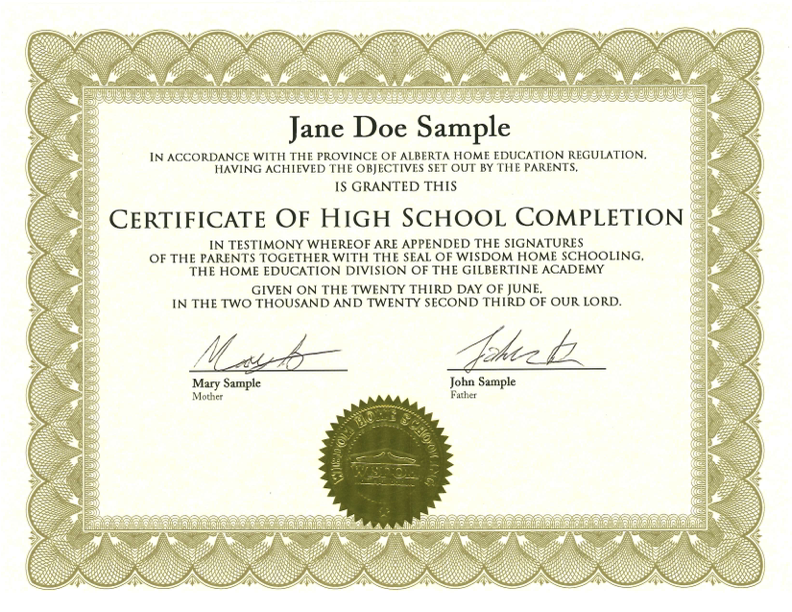 The WISDOM Certificate of High School Completion is an official document, verified by the parent(s), complete with the WISDOM seal.
The WISDOM Certificate of High School Completion is an official document, verified by the parent(s), complete with the WISDOM seal.
Please download the request form below. This form is to be completed by the parent(s). Knowing the expectations of high school achievement in advance will help the student prepare to adequately fulfil all of the learning outcomes throughout high school.
Download Certificate Request Form
Step by step process for achieving the WISDOM Certificate of High School Completion:
- Student and parent(s) develops portfolio throughout high school
- Download the WISDOM Certificate of High School Completion Request Form.
- The parent(s) verify that each outcome has been met by checking them off on the form and signing it.
- Submit your completed form to highschool@wisdomhomeschooling.com.
- Upon receiving the request form, a WISDOM certificate of high school completion will be awarded and mailed to the student/parent(s).
Achieving the Alberta High School Diploma
As an alternative option to the WISDOM Diploma or Certificate of High School Completion, a student pursuing credits through the Alberta Programs of Study has the opportunity to achieve the Alberta High School Diploma. The Alberta Diploma is automatically awarded to a student who has successfully completed the required courses with 100 credits.
Benefits of an Alberta Diploma:
- Access to trade schools and college programs
- You may achieve the diploma while using supplemented home education curriculum
Limitations:
- May not allow direct access to University
- Time spent fulfilling requirements & writing provincial exams
For more information, please visit our information on Pursuing High School Credits.
- Alberta High School Graduation Diploma Requirements
- Home Education Regulation (See section 6 on high school credit eligibility for home education students)

